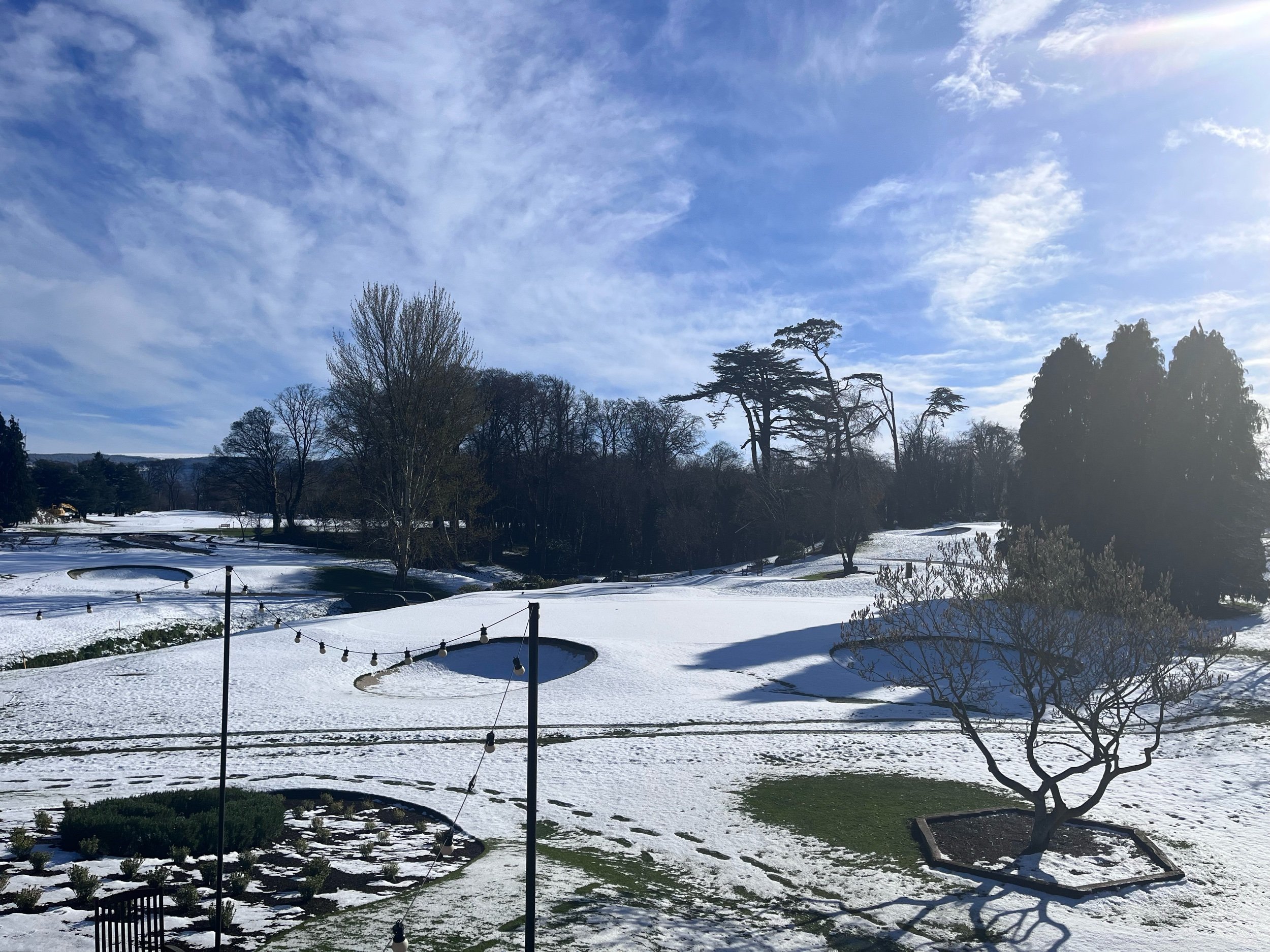How to Work on Your Golf Game During Winter

When the air gets chilly and golf courses become covered in snow, the enthusiasm for improving your golf game may dwindle.
However, dedicated golfers know that the off-season is an excellent opportunity to refine their skills and come back stronger when spring arrives.
Keeping up your golf game during winter can also be an excellent way to support your overall well-being through physical exercise and community.
In this guide, we'll explore effective ways to work on your golf game during the winter months.
1. Indoor Golf Simulators: Transform Your Living Space into a Virtual Fairway
Embrace the wonders of technology by setting up an indoor golf simulator in your own home. Convert a spare room or basement into a golfing paradise where you can practice your swing, play virtual rounds, and receive real-time feedback on your performance.
In general, you will need a room that is 12 feet wide, 15 feet long, and has at least 10 feet of ceiling height so that you can complete a full swing without hitting anything.
You can expect it to cost around $3,000-$4,000 to build your own setup. You can learn more here about how to build a golf simulator man cave (or woman cave!)
2. Focus on Strength and Flexibility: Off-Course Conditioning
Winter is an ideal time to work on your physical conditioning. Engage in strength and flexibility exercises that target core muscles, improve balance, and enhance overall fitness. A strong and flexible body contributes significantly to a powerful and controlled golf swing.
3. Practice Putting: Master the Green Without Leaving Home
Enhance your putting skills by creating a simple indoor putting area. Invest in a quality putting mat, practice your stroke, and work on achieving a consistent rhythm. Improved putting can significantly lower your overall score on the course.
4. Analyze and Refine Your Swing: Video Analysis at Home
Record your swings and use video analysis tools to get detailed feedback on your technique. Identify areas for improvement, compare your swings to professional players, and make necessary adjustments. This insightful self-analysis can lead to significant progress in your golf swing.
5. Read Golf Magazines and Literature: Expand Your Knowledge Base
Take advantage of the winter downtime to immerse yourself in golf literature. Read magazines, online publications, forums, and instructional books, or watch tutorial videos to absorb insights from experienced golfers. A deeper understanding of the game can positively impact your strategic approach on the course.
6. Join an Indoor Golf League: Stay Competitive
Many indoor facilities organize golf leagues during the winter season. Joining a league not only provides a competitive edge but also fosters a sense of community. Challenge yourself against fellow golfers and keep the competitive spirit alive even when the weather is unfavorable.
7. Plan a Golf Getaway: Escape to Warmer Climates
If the winter blues become overwhelming, consider planning a golf getaway to a warmer destination. Take a break, enjoy some sunshine, and keep your swing in action even when your local course is covered in snow.
FAQs
How do you practice chipping in the winter?
To practice chipping off the course in the winter, golfers often use indoor tools like putting mats, golf-hitting nets, foam or practice golf balls, and chipping targets. If you’ve opted to build your own indoor golf simulator room you can use this space to practice chipping.
You could also consider incorporating a mirror for technique feedback, balance exercises, and video analysis to refine your chipping skills.
Are there other indoor practice spaces if I can’t build my own?
Yes, there are local public spaces such as Topgolf and other local businesses that provide a place to practice your technique (and get in some extra socialization) during the winter months.
Conclusion
Winter doesn't have to mean a hiatus for your golf game. By incorporating indoor training, creating an indoor space, physical conditioning, putting practice, swing analysis, and continued learning, you can use the off-season to your advantage. Stay motivated, explore new facets of the game, and emerge from winter with a refined golf game ready to tackle the challenges of the upcoming season.
